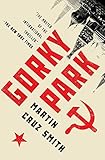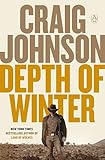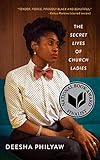At the beginning of this strange and disjunctive year, I decided—for the first time—to keep a formal list of all the books I would read over the course of twelve months. When I started it in January, I was preparing for the release of my debut novel, Winter Counts, and thought it might be fun to remember the books I’d read during this exciting time.
Looking at the list now, I can recall where I was for each book I read in January, February, and March. Coffeeshops, restaurants, bars. The pleasant buzz of strangers chatting and soft music in the background. Naturally, in addition to reading, in the first few months of 2020 I also spent a fair amount of time thinking about and planning my book tour: contemplating which cities to visit; pondering which passages of the novel to read; feeling mild anxiety over the possibility of reading at a bookstore in front an audience of only one or two people.
Little did I know that, in September, just two weeks after the release of my novel, I’d be sitting in my home office in Colorado giving a reading in front of a computer, and that a completely naked eighty-year-old man would appear on the screen during the event, fully aroused, and, uh, pleasuring himself. Of all the disastrous scenarios I’d envisioned for my book launch, the possibility of a geriatric onanist had not crossed my mind.
It’s somewhat astonishing how quickly the publishing industry pivoted in the months after the virus appeared. We moved from book tours and conferences to Zoom readings and virtual events almost immediately, and the term “Zoombombing” entered the lexicon. But another change—one I heard echoed from nearly all of my friends—was that our ability to concentrate had deteriorated during the shutdown, and that reading became increasingly difficult. This was certainly true for me as well.
It’s an odd feeling to look at my book list now, as it brings home the division of the year into the Beforetimes and Aftertimes. In the period from January to March, I read eleven books, start to finish, with great enthusiasm. From April through November, I read only eight, due to my inability to completely focus. I also lost the ability to sit through most films and television series, and I used what little downtime I had during the shutdown to monitor news of the pandemic and the election. Happily, this fog began to lift in the summer, as I regained my concentration and was able to enjoy some outstanding novels as well as several excellent scripted dramas, such as The Queen’s Gambit on Netflix.
In the Beforetimes, I read a number of books in a variety of genres, but no book surprised me more than The Indians Won by the author Martin Smith, later known as Martin Cruz Smith. Smith, who is Pueblo, is best known for thriller novels such as the wildly successful Gorky Park. But in the early years of his career, he wrote some books that should, in my view, be considered important works in the Native American canon. It’s my belief—and I’ll defer to literary scholars with better knowledge—that his 1977 novel Nightwing is the first thriller written by a Native author (but not the first detective novel written by an indigenous author—that honor almost certainly goes to the Golden Age writer Todd Downing).
However, Nightwing was preceded by The Indians Won in 1970, written not long after Smith graduated from college. The novel, now out of print and difficult to find, is an alternate history, divided into two sections. The first narrative, set in the mid-1800s, imagines a world in which the great leader Crazy Horse had not been assassinated and instead worked to unite all of the Native nations in North America. Backed by weapons supplied by European powers, the unified Natives defeat the American forces and establish a pan-Indian nation in the middle of the continent. The second section envisions the same country, known as the Indian Nation, in the 1970s. The nation, governed by indigenous principles, is now a nuclear power and engaged in a cold war with the United States. Overall, The Indians Won is a fascinating high-concept novel that doesn’t always succeed in character development or narrative tension, but is still a groundbreaking book that deserves to be reissued.
I also reread Skins by Adrian C. Louis in preparation for a panel honoring him at the AWP conference. It had been at least 15 years since I first read the novel, and I was wondering if it held up. Happily, the book was every bit as good as I remembered, and it was a pleasure to be with Rudy, Vivianne, and Mogie again. At the conference, I read a short passage detailing the death of the main character’s brother Mogie and his entrance to the spirit world, where he encounters his mother and generations of relatives. When I finished reading it, I saw that nearly everyone in the audience had teared up. I’d remembered Louis’s gruff humor and characters, but I’d forgotten that gentle moment.
In the Beforetimes, when I was able to focus with full clarity and concentration, I read a series of wonderful crime novels: Girl Gone Missing, Rain Dogs, and Depth of Winter. I also decided to catch up on some classic mysteries that I’d never gotten around to reading: The Postman Always Rings Twice and They Shoot Horses, Don’t They? While Postman is a deserved classic, They Shoot Horses, Don’t They? was disappointing, its desperate characters intriguing but failing to resonate with me.
The book that most enthralled me was This Tender Land by William Kent Krueger. Although Krueger is known as a crime novelist, this sprawling book is more akin to The Grapes of Wrath than The Killer Inside Me. Set during the Great Depression, it’s the story of two non-Native children who are orphaned and enrolled in an American Indian boarding school, where they experience the same horrors as the Native students. For me, this book held a special meaning, as my maternal grandmother was enrolled in the most infamous boarding school for Natives, the Carlisle Indian Industrial School in Pennsylvania. Krueger’s book depicts the shameful practices utilized by the boarding schools, including physical and sexual abuse, cultural genocide, and forced labor. But the novel ends on a hopeful, graceful note, the heart and soul of the book matching the lyrical prose.
Although the shutdown derailed me for several months, I was able to regain my concentration by reading excellent novels by some friends: Blacktop Wasteland by S.A. Cosby, and Wesley Browne’s Hillbilly Hustle. These novels provided the plot-driven, action-oriented narratives that brought me out of my distraction. I followed these two with the superb November Road, an absolute classic crime novel.
After the release of Winter Counts, I was fortunate enough to be gifted a number of advance review copies of forthcoming novels. The first of these was The Effort by Claire Holroyde, a stunning work of apocalyptic fiction that deals with a massive comet approaching the Earth and threatening to end human civilization. It would be wrong to provide any spoilers, so I’ll note that the book has wonderfully drawn characters, a compelling plot, and an interesting, shifting narrative structure.
I also devoured The Removed by Brandon Hobson, a compelling book about a Cherokee family in crisis. The characters in the novel are flawed, heroic, complicated, and unforgettable, and the book also takes a deep dive into Cherokee traditions. Not to mention, I frequently stopped reading to underline a remarkable sentence or phrase. The Removed is an impressive achievement that will certainly be viewed as one of the important books of 2021.
Finally, I stumbled across an emerging Native writer’s work after reading a tweet from my friend, Stephen Graham Jones. Anoka, by Cheyenne & Arapaho writer Shane Hawk, is a short collection of indigenous horror stories, self-published and available online. While I don’t read much horror, the vibrancy of these stories immediately impressed me. The voice in these six stories is urgent, insistent, and unrelenting, and I couldn’t put the book down until I’d finished each one.
As 2020 stumbles to its conclusion, I’m rejoicing in my ability to again concentrate and, thankfully, read and write again. I’ve started writing the sequel to Winter Counts and it’s been a pleasure to again enter the fictional realm and put aside disquieting fears of viruses and societal calamities. I’ve also purchased several books that have risen to the top of my To Be Read pile.
I had the wonderful fortune to receive an inscribed copy of Louise Erdrich’s The Night Watchman, and I’ve been waiting for the right moment to start it. The Secret Lives of Church Ladies has been recommended to me by several people, and The Churchgoer by Patrick Coleman somehow slipped by me when it was released last year. And finally, I’ve got Don DeLillo’s new novel, The Silence, on my shelf. That book—about five people gathered together during a catastrophic event—seems as good as any to end the year 2020.




















